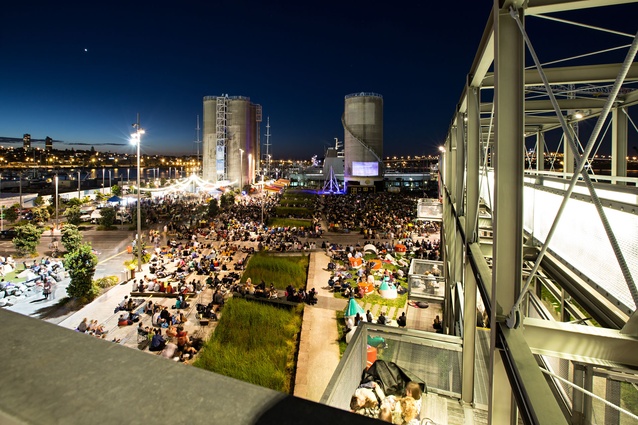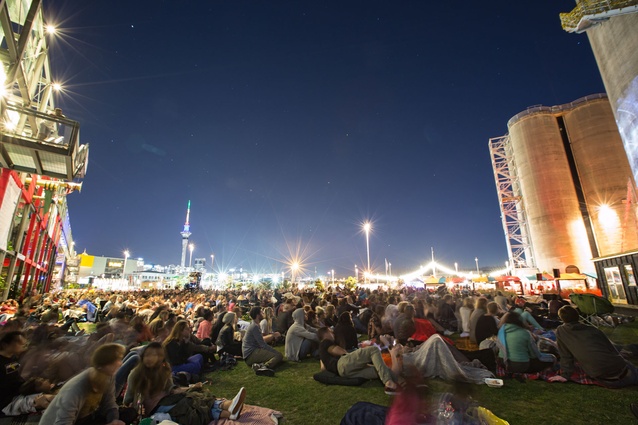Making space for place
Director of Auckland-based placemaking firm Fresh Concept, Simon van Praag, muses on the growing global interconnectivity of placemaking and urban design - collaboration aimed at enhancing the community-led activation of urban environs.
Placemaking (as it is commonly referred to today) finds its roots with a group of forward-thinking urban minds including Jane Jacobs, Kevin Lynch and William Whyte. These great thinkers changed the relationship between people and the urban environment, encouraging the consideration of cities as being for the community that lives within them. This marked a distinct change from a trend that was starting to emerge where planners were creating environments that prioritised roads and built spaces.
Placemaking, as a term, holds different meanings for many people. The term and the concepts it encompasses are becoming more publicly recognised and acknowledged internationally. Public organisations and those who play caretaker to our public spaces are making a shift towards the recognition of the values of placemaking. We are seeing design initiatives that enable the public to connect not only with the urban spaces offered to them, but which act as the catalyst for the public to engage with one another— a significant philosophical shift from the vast paved spaces of recent decades.
The way I describe the practice of placemaking is through the simple analogy of a house becoming a home. A house is an object, but ‘home’ refers to the fabric of our human interaction with that object; the same goes for space and place. A space without a sense of place is one void
of any reference we connect to, and a space without reference or meaning to us is a waste of opportunity and resources. In the context of an urban environment, place refers to the human elements within the vertical, the concrete and the purely-functional spaces that make up the cities and towns in which we live.
Where the space is a new development or an as yet-uninhabited area, the treatment needs to consider the ultimate residents and community of the development, while acting as the tool through which access to, and advocacy for, the area is achieved. You can’t create community, but placemaking can certainly assist in planting seeds and pointing to the future of the area.
There are many tools within the placemaking kit; many of which are shrouded in debate about how best to utilise them to assist in fostering a space that encourages community engagement.
Having a design- and place-led strategy from the outset in my view is the ultimate, but organic community-led initiatives must also be celebrated. Placemaking solutions must be tailored to the space’s community and its collective desires, backgrounds, cultural identification and understandings. The required tools for one space’s proposed outcome will differ immensely from another, and it is often the one-size-fits-all, formulaic approach that sparks debate when considerations of place are discussed. The ultimate end game of any work to activate public space is for the groups who plant the initial seeds to succeed in working themselves out of a job, with the community taking the reins.
There are myriad views about what the right approach to facilitating place within a public space is, and a varied raft of techniques have recently been used in projects worldwide. Traditional activation processes such as free concerts, cinema screenings and other community-based event activities with strong impact remain some of the most powerful channels to apply a sense of place quickly, but maintaining this level of activation in a financially sustainable way presents an unenviable challenge. In this event, a public-private partnership or sponsorship can be effective in maintaining the public experience of a space where the most important brand is the public themselves.
Organisations such as Renew (Australia), operate with an approach, which can be viewed as simultaneously sustainable over a long term and financially responsible. Marcus Westbury, the founder of Renew Australia, is a champion for the opening up of private spaces to the public with minimal capital investment. These spaces are offered to the creative industries and the resulting rejuvenation of the surrounding area returns a high social value for its inhabitants, community and visitors. Renew’s initial success in Newcastle, and other regions subsequently, has proved an inspirational story, which has been closely monitored by the global placemaking community.
Providing the public with the impetus to get involved with a space autonomously is where organisations such as Gap Filler and Life in Vacant Spaces have found great success. They helped to bring together a broken and disheartened community in Canterbury after the earthquakes and recent flooding. Through initiatives such as Dance-o-Mat and the Community Gardens, the self-directed engagement the community asserted over the spaces around them assisted in the reclamation of a city, which was swiftly being taken away by natural and bureaucratic powers.
Other activation is grafted into a space and can expand the community of a specific group of individuals in a positive manner. A concise example of this action is a weekend market, which on the one hand offers a low-level incubation opportunity to small businesses, and on the other, a chance for the wider community to add their own experience to a routine offering.
A welcome trend is starting to emerge where urban designers are seeking public submissions on proposed works and integrating into them a level of place-led focus. It is exciting to see designers consulting not only the community but also placemaking organisations to assist in crafting spaces that, as Massachusetts Institute of Technology’s Susan Silberberg describes it, improve public space, spark public discourse, create beauty and delight, engender civic pride, connect neighbourhoods, support community health and safety, grow social justice, catalyse economic development, promote environmental sustainability and of course nurture an authentic sense of place.











